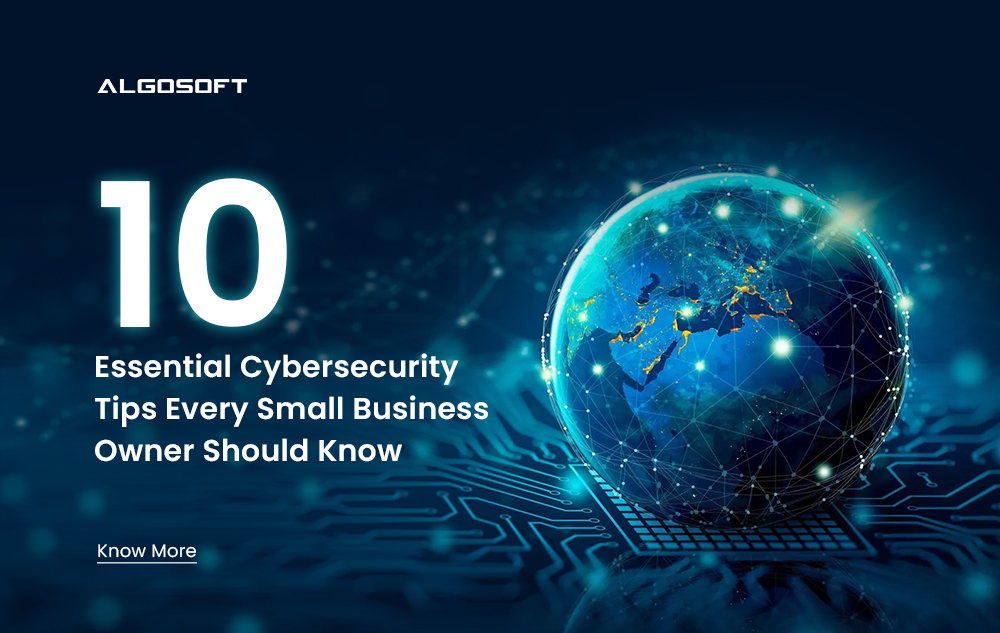Cybersecurity Services
10 Essential Cybersecurity Tips Every Small Business Owner Should Know
- Written by
Monika - Posted on
February 14, 2025

In today’s digital age, small businesses are becoming increasingly reliant on technology. While this opens up exciting opportunities for growth and innovation, it also exposes them to a myriad of cyber threats. As a small business owner, it’s crucial to safeguard your company’s sensitive information and customer data from potential breaches. The truth is that cyberattacks don’t just target large corporations; they often focus on smaller enterprises due to their perceived vulnerabilities.
The good news? With the right cybersecurity services and strategies in place, you can protect your business effectively without breaking the bank. Let’s dive into essential tips every small business should embrace to fortify its defenses against cybercriminals and ensure long-term success in an ever-evolving landscape.
Cyber threats come in many forms, and small business owners need to be aware of them. Phishing attacks are among the most common. These deceptive emails trick employees into revealing sensitive information or clicking malicious links.
Ransomware is another significant danger. This malware locks critical data, demanding payment for access. Such incidents can cripple operations and lead to substantial financial losses.
Then there’s social engineering, where attackers manipulate individuals into divulging confidential details. This tactic exploits human trust rather than technical vulnerabilities.
DDoS (Distributed Denial-of-Service) attacks flood networks with traffic, rendering services unusable. They disrupt business continuity and can tarnish reputations.
Understanding these threats is crucial for implementing effective cybersecurity services tailored to your needs. Awareness can help shape a proactive defense strategy against potential breaches that could jeopardize your company’s future.
A strong password policy is the backbone of your cybersecurity strategy. Weak passwords are like open doors to cybercriminals.
Encourage employees to create complex passwords that combine letters, numbers, and symbols. Avoid easily guessable information like birthdays or common names.
Implement a mandatory password change every few months. This keeps accounts secure even if an old password gets compromised.
Consider using a password manager. These tools help generate and store unique passwords for each account securely.
Two-factor authentication adds another layer of protection. It requires users to verify their identity through additional steps, making unauthorized access much more difficult.
Remind your team not to share passwords over email or messaging apps. Simple precautions can save you from potential breaches down the line.
One of the most crucial aspects of cybersecurity is employee education. Your team plays a significant role in safeguarding your business from cyber threats.
Start by holding regular training sessions. Focus on recognizing phishing attempts, suspicious links, and social engineering tactics. Employees should understand that even simple actions can lead to serious security breaches.
Create easy-to-follow guidelines for daily operations. Encourage staff to use secure passwords and change them regularly. This step alone can significantly reduce vulnerabilities.
Simulate real-world scenarios through drills or quizzes. Engaging employees this way enhances their ability to respond effectively when faced with actual threats.
Foster an open environment where team members feel comfortable reporting potential issues without fear of reprimand. Communication is key in building a strong cybersecurity culture within your organization.
Firewalls and antivirus software are essential tools in your cybersecurity arsenal. They act as the first line of defense against unwanted intrusions and malware.
A firewall monitors incoming and outgoing traffic, helping to block harmful data packets before they reach your network. It’s like having a security guard at your digital front door.
Antivirus software scans for malicious programs that can infect your systems. Regular updates ensure it recognizes the latest threats, keeping your business safe from evolving cybercriminal tactics.
Investing in these services is not just about compliance; it’s about protecting sensitive data. Make sure to configure them correctly for maximum effectiveness.
Remember, relying solely on one measure isn’t enough. A multi-layered approach strengthens overall security, giving you greater peace of mind in today’s interconnected world.
Keeping your software and systems updated is crucial for cybersecurity. Every update often includes patches that fix vulnerabilities. If you ignore these updates, you might be leaving doors wide open for cybercriminals.
Automating the update process can save time and ensure you’re always protected with the latest features. Many businesses forget to check their applications regularly, but this oversight can have serious consequences.
Outdated software can become an easy target for hackers looking to exploit weaknesses. By staying current, you enhance your defenses against potential breaches.
Don’t just focus on major operating systems; consider all applications in use—from productivity tools to specialized software. Each piece plays a role in your overall security landscape.
Prioritizing regular updates demonstrates a proactive approach towards safeguarding company data and customer information from evolving threats.
Securing your Wi-Fi network is paramount for protecting your business data. An open or poorly secured network can expose sensitive information to cybercriminals.
Start by changing the default SSID and password of your router. Many hackers exploit these defaults, making it easy for them to gain access.
Enable WPA3 encryption if possible. This offers stronger security compared to previous protocols and helps protect against unauthorized access.
Regularly update your router’s firmware. Manufacturers often release updates that patch vulnerabilities, so staying current is essential.
Consider hiding your Wi-Fi network from public view by disabling SSID broadcasting. While this won’t stop determined attackers, it adds an extra layer of difficulty for casual snoopers looking to connect without permission.
Take your business to new heights by offering unmatched mobility to your customers!


Privacy Policy I Terms & Conditions
© Algosoft Apps Technologies (P) Ltd. (CIN) U93030UP2015PTC075117
Share this article